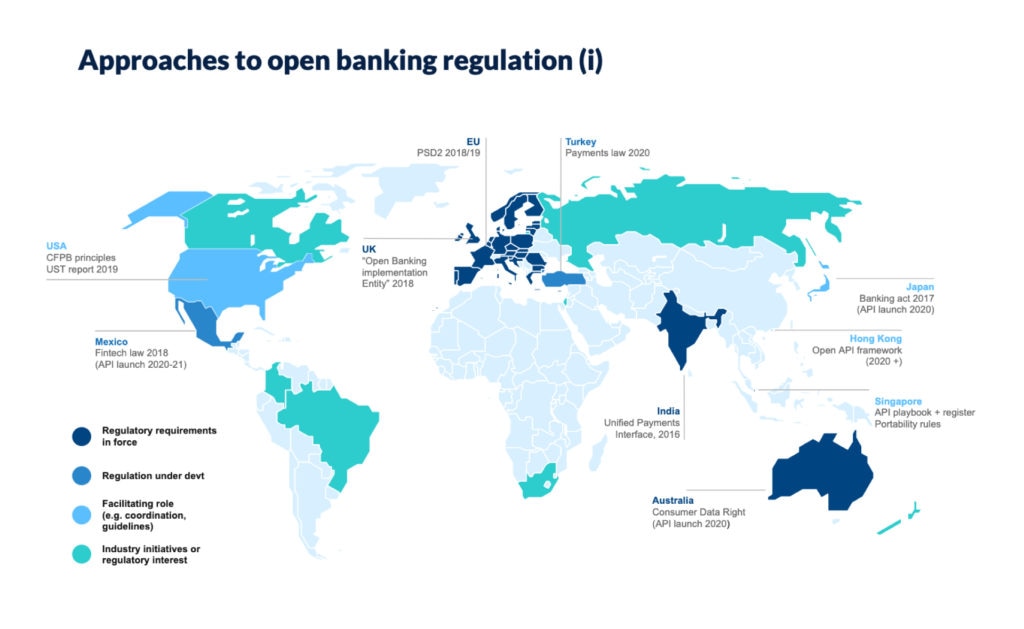
Tax Incentives for Small Businesses: Maximizing Your Benefits & Boosting Your Bottom Line
As a small business owner, you’re constantly juggling multiple hats – sales, marketing, operations, and, of course, finances. Taxes can feel like a daunting burden, often seen as a necessary evil that eats into your hard-earned profits. But what if we told you that the tax code isn’t just about what you owe, but also about what you can save?
The truth is, the U.S. government offers a wide array of tax incentives for small businesses designed to encourage growth, innovation, job creation, and specific types of investments. These aren’t loopholes; they are legitimate small business tax benefits that, when understood and utilized correctly, can significantly reduce your tax liability, free up cash flow, and ultimately boost your bottom line.
This comprehensive guide will demystify the world of small business tax credits and tax deductions for businesses, making it easy for beginners to understand and apply. We’ll explore various incentives, provide actionable strategies for maximizing tax savings, and help you turn tax season from a dreaded chore into a strategic opportunity.
Why Understanding Tax Incentives Matters for Your Small Business
Ignoring potential tax savings is like leaving money on the table. For small businesses, every dollar saved in taxes is a dollar that can be:
- Reinvested: Purchase new equipment, upgrade technology, or expand your operations.
- Used for Growth: Fund marketing campaigns, develop new products, or enter new markets.
- Invested in Employees: Offer better benefits, training, or increase salaries.
- Boosted Cash Flow: Improve liquidity and financial stability, especially during lean times.
- Increased Profitability: Directly contribute to your overall financial health and success.
In essence, smart tax planning is not just about compliance; it’s a critical component of your business’s financial strategy.
Deductions vs. Credits: Understanding the Core Difference
Before diving into specific incentives, it’s crucial to understand the fundamental difference between tax deductions and tax credits:
-
Tax Deductions: These reduce your taxable income. This means they lower the amount of your business income that the government can tax. For example, if you have $100,000 in income and $20,000 in deductions, your taxable income becomes $80,000. Your tax is then calculated on this lower amount. The actual value of a deduction depends on your tax bracket.
- Think of it like this: A deduction makes your "pie" (taxable income) smaller before the government takes its "slice."
-
Tax Credits: These directly reduce the amount of tax you owe, dollar for dollar. If you have a $1,000 tax credit, your tax bill goes down by $1,000, regardless of your tax bracket. Some credits can even be "refundable," meaning if the credit reduces your tax bill below zero, the IRS will send you a refund for the difference.
- Think of it like this: A credit is like a direct payment or coupon that you apply after your tax bill has been calculated.
In simple terms: Deductions reduce income, credits reduce taxes directly. Credits are generally more valuable.
Common Tax Deductions for Small Businesses
Most small businesses are familiar with basic expense deductions, but it’s worth reviewing the breadth of what’s often overlooked. Keep meticulous records for all of these!
1. Ordinary and Necessary Business Expenses
This is the broadest category and includes almost anything that is "ordinary and necessary" for your business operation.
- What it covers: Rent, utilities, office supplies, software subscriptions, advertising and marketing costs, professional fees (accountants, lawyers), business insurance premiums, and more.
- Key takeaway: If it directly helps you run your business, it’s likely deductible.
2. Home Office Deduction
If you use a portion of your home exclusively and regularly for business, you may qualify.
- How it works: You can deduct a percentage of your housing expenses (mortgage interest, rent, utilities, insurance, repairs) based on the square footage of your dedicated home office space.
- Simplified option: The IRS offers a simplified option where you can deduct $5 per square foot of your home office, up to a maximum of 300 square feet ($1,500).
- Important: The space must be exclusively used for business. No mixing personal and business use.
3. Health Insurance Premiums
Self-employed individuals (sole proprietors, partners in a partnership, or S-corporation shareholders owning more than 2% of the company) can often deduct health insurance premiums for themselves, their spouse, and dependents.
- Conditions: You cannot be eligible to participate in an employer-sponsored health plan (e.g., if your spouse has one available).
- Benefit: This is an "above-the-line" deduction, meaning it reduces your adjusted gross income (AGI), which can help you qualify for other tax breaks.
4. Retirement Plan Contributions
Saving for retirement is not only smart personal finance but also a powerful tax incentive for your business.
- Types of plans:
- SEP IRA (Simplified Employee Pension): Easy to set up, allows high contribution limits for the employer (you).
- SIMPLE IRA (Savings Incentive Match Plan for Employees): Suitable for businesses with up to 100 employees, requires employer contributions.
- Solo 401(k): Ideal for self-employed individuals with no employees (other than a spouse), allows you to contribute as both an employee and an employer.
- Benefit: Contributions are generally tax-deductible for your business, and the money grows tax-deferred until retirement.
5. Depreciation and Section 179/Bonus Depreciation
When you purchase long-lasting assets for your business (equipment, vehicles, machinery, furniture), you can’t usually deduct the full cost in the year of purchase. Instead, you "depreciate" them over their useful life.
- Depreciation: Spreads the deduction over several years.
- Section 179 Deduction: Allows businesses to deduct the full purchase price of qualifying equipment and software placed into service during the tax year, up to certain limits ($1.22 million for 2024). This is a huge incentive to invest in your business.
- Bonus Depreciation: Allows businesses to deduct a large percentage (often 80% for 2023, phasing down) of the cost of qualifying new or used property in the year it’s placed in service, in addition to Section 179.
6. Startup Costs
When you first launch your business, you incur various expenses before you even make your first sale.
- What’s covered: Costs for investigating the creation of your business (market research, legal fees), and costs for setting it up (advertising before opening, employee training, professional fees).
- Deduction limit: You can deduct up to $5,000 in business startup costs and $5,000 in organizational costs in the year your business begins. Any remaining costs are amortized (deducted) over 180 months (15 years).
7. Business Travel, Meals, and Entertainment
- Travel: Fully deductible for ordinary and necessary expenses incurred while traveling away from your tax home for business purposes (e.g., airfare, lodging, transportation, tips).
- Meals: Generally 50% deductible if the meal is not lavish or extravagant and the business owner (or employee) is present. For 2021 and 2022, certain restaurant meals were 100% deductible to support the restaurant industry. Always check current IRS guidelines.
- Entertainment: Generally not deductible after the Tax Cuts and Jobs Act (TCJA), with limited exceptions.
Powerful Tax Credits for Small Businesses
Tax credits offer a direct reduction to your tax bill, making them incredibly valuable. Here are some of the most impactful ones for small businesses:
1. Research and Development (R&D) Tax Credit
Often misunderstood as being only for large corporations with laboratories, the R&D credit is available to small businesses that engage in activities designed to develop new or improved products, processes, or software.
- Who qualifies: Any business, regardless of size or industry, that invests in innovation, problem-solving, or improving existing processes. This could be a software developer, a manufacturer optimizing production, a brewery experimenting with new recipes, or even a construction company developing a new building technique.
- Benefit: A dollar-for-dollar reduction in tax liability. Small businesses (less than $5 million in gross receipts for less than 5 years) can even use the credit to offset payroll taxes, making it valuable even for unprofitable startups.
2. Work Opportunity Tax Credit (WOTC)
This credit encourages employers to hire individuals from certain target groups who face significant barriers to employment.
- Target groups include: Qualified veterans, ex-felons, long-term unemployment recipients, certain welfare recipients, and more.
- Benefit: Up to $9,600 per eligible new hire, directly reducing your tax bill.
3. Energy Efficient Commercial Buildings Deduction (179D) & Energy Credits
The government incentivizes businesses to adopt energy-efficient practices and renewable energy.
- 179D: Allows building owners or designers to deduct the cost of energy-efficient improvements to commercial buildings.
- Other credits: Businesses can claim credits for installing solar panels, wind turbines, fuel cells, and other renewable energy equipment. These can significantly offset the cost of going green.
4. Employer-Provided Child Care Facilities and Services Credit
If you provide childcare services or facilities for your employees, you could be eligible for a credit.
- Benefit: Up to 25% of qualified childcare facility expenses and 10% of qualified childcare resource and referral expenditures, with a maximum credit of $150,000 per year.
5. Paid Family and Medical Leave Credit
This credit encourages employers to provide paid family and medical leave to their employees beyond what’s legally required.
- Benefit: Employers can claim a credit of 12.5% to 25% of the wages paid to qualifying employees on family and medical leave, depending on the percentage of wages paid.
Special Programs & Other Key Incentives
Beyond general deductions and credits, specific programs offer significant tax advantages.
1. Qualified Business Income (QBI) Deduction (Section 199A)
This is one of the most significant benefits for many small businesses, particularly those structured as pass-through entities (sole proprietorships, partnerships, S-corporations, LLCs).
- How it works: Allows eligible self-employed individuals and small business owners to deduct up to 20% of their qualified business income from their personal taxes.
- Benefit: This deduction is taken after your Adjusted Gross Income (AGI) is calculated, effectively lowering your taxable income and therefore your tax bill. There are income limitations and restrictions for certain "specified service businesses" (e.g., doctors, lawyers, consultants), so professional advice is crucial.
2. Opportunity Zones
These are economically distressed communities where new investments, under certain conditions, may be eligible for preferential tax treatment.
- Benefit: Investors can defer, reduce, and potentially eliminate capital gains taxes by investing in Qualified Opportunity Funds (QOFs) that invest in these zones. While primarily for investors, small businesses locating or expanding in these zones can benefit from the influx of capital and potential local incentives.
Strategies for Maximizing Your Small Business Tax Benefits
Knowing about incentives is one thing; effectively utilizing them is another. Here’s how to be proactive and strategic:
1. Meticulous Record-Keeping is Non-Negotiable
This is the cornerstone of successful tax planning. Without proper documentation, you cannot claim deductions or credits.
- What to track: Receipts for all expenses, mileage logs, bank statements, invoices, payroll records, and documentation for any specific credit requirements (e.g., employee certifications for WOTC).
- Tools: Utilize accounting software (QuickBooks, Xero), expense tracking apps, or even a dedicated spreadsheet. Cloud-based solutions offer easy access and backup.
2. Consult a Qualified Tax Professional (CPA or Enrolled Agent)
While this article provides a solid overview, tax laws are complex and constantly changing. A professional can:
- Identify specific incentives: They know the nuances of the tax code and can pinpoint benefits you might miss.
- Ensure compliance: Help you avoid costly errors and penalties.
- Develop a tax strategy: Offer year-round advice, not just at tax time, to minimize your liability.
- Represent you: If you face an IRS audit.
3. Stay Updated on Tax Law Changes
Tax laws are not static. New credits are introduced, old ones expire, and rules are modified.
- How to stay informed: Subscribe to IRS updates, follow reputable tax news sources, and maintain regular communication with your tax advisor.
4. Proactive Tax Planning Throughout the Year
Don’t wait until April 15th! Tax planning should be an ongoing process.
- Regular reviews: Schedule quarterly or bi-annual meetings with your tax professional to review your financial situation, project income, and identify potential deductions or credits.
- Make estimated tax payments: Avoid penalties by paying your taxes throughout the year if you expect to owe.
- Consider major purchases: Strategically time large equipment purchases to maximize Section 179 or bonus depreciation.
5. Understand Your Business Structure
Your business entity type (sole proprietorship, partnership, S-Corp, C-Corp, LLC) significantly impacts how you’re taxed and which incentives you can claim.
- Example: C-Corporations face double taxation but have specific deductions and credits not available to pass-through entities. Pass-through entities benefit from the QBI deduction.
- Action: Discuss the optimal structure for your business with your accountant and legal counsel.
Common Mistakes Small Businesses Make (and How to Avoid Them)
- Not keeping good records: The biggest mistake! No records, no deductions.
- Mixing personal and business finances: Makes tracking expenses incredibly difficult and raises red flags with the IRS. Use separate bank accounts and credit cards.
- Missing deadlines: Penalties for late filing or payment can quickly erode any tax savings.
- Not understanding the difference between deductions and credits: Leads to missed opportunities or incorrect calculations.
- Ignoring state and local tax incentives: Many states and local governments offer their own tax breaks for small businesses (e.g., for hiring, job creation, specific industries). Don’t just focus on federal.
- Trying to do it all yourself without professional help: While admirable, tax law is complex. A few hundred dollars for professional advice can save you thousands.
Conclusion: Empower Your Business Through Smart Tax Planning
Navigating the world of tax incentives for small businesses might seem overwhelming at first, but with a clear understanding of the opportunities and a proactive approach, you can turn tax season into a strategic advantage. From fundamental tax deductions for businesses like home office expenses and retirement contributions, to powerful small business tax credits like the R&D credit and WOTC, the tools are there to significantly reduce your tax burden.
Remember, the key lies in meticulous record-keeping, staying informed, and, most importantly, partnering with a knowledgeable tax professional. By maximizing your tax benefits, you’re not just saving money; you’re investing in your business’s future, fueling its growth, and ensuring its long-term success. Don’t let valuable tax savings slip through your fingers – take control of your financial future today!
Disclaimer: This article is for informational purposes only and does not constitute tax or legal advice. Tax laws are complex and subject to change. Always consult with a qualified tax professional or financial advisor for advice tailored to your specific business situation.



Post Comment